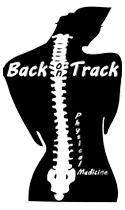
Back On Track
Physical Medicine
832-786-1775
DOT/ NON-DOT DRUG TESTING
Urinalysis is the most common test type and used by federally mandated drug testing programs. When drugs are taken in any form, traces end up in the urine within a very short time. Depending on the drug taken, they will remain in the urine for days or weeks. If drugs are present, our drug testing system will identify them. We do 5-panel DOT and non-DOT drug testing, plus 10-panel non-DOT drug testing, or any combination thereof, as required by the employer. Whether your business requires pre-employment, post-accident, random, Reasonable-Suspicion, Return-to-Duty or Follow-Up testing programs, we can provide you with 24-hour negative and pending notification, and 48-hour positive verification.
Laboratory testing includes collection of the sample, transport to the laboratory, analysis, confirmation by a certified laboratory and a test review by a Medical Review Officer. We work under contract with some of the nation’s major Drug Testing Laboratories including: Quest Diagnostics, Medtox Laboratories, Lab Corp, Redwood Toxicology, One Source Toxicology, Team CME and many more.
When an employer requests a drug test from an employee the employee is instructed to go to a collection site. There, the employee’s urine is collected in a specially designed secure cup and sealed with a tamper resistant tape. The cup is then sent by express delivery service to a testing laboratory where it will be tested for several drugs. The first step at the testing site is to split the urine into two aliquots. One aliquot is first screened for drugs using an analyzer that performs immunoassay as the initial screen. If the urine screen is positive then another aliquot of the sample is used to confirm the findings by gas chromatography - mass spectroscopy (GC-MS) methodology. All test results are relayed to an MRO (Medical Review Officer) where a medical physician reviews the results. If the result of the screen is negative, the MRO informs the employer that the employee is clean and has no detectable drug in the urine.
New regulations from the U.S. Department of Transportation are requiring that specimens which indicate a low temperature or show signs of adulteration be admitted with a second specimen from the donor, which is collected under direct observation. That is, the donor voids in full view of the collector or observer. The new regulations also require that the donor raise and lower clothing and turn around in front of the collector or observer to show that the donor is not in possession of any device or substance with intent to falsify the test. In several states, it is illegal to sell or possess such a device or substance.
Drug and Alcohol Tests
Employers are required to test their DOT-regulated safety-sensitive employees for the following five controlled substances: